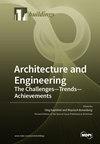Investigating the Mechanical Deterioration Effect of Hard Sandstone Induced by Layer Structure under Uniaxial Compression
IF 3.1
3区 工程技术
Q2 CONSTRUCTION & BUILDING TECHNOLOGY
引用次数: 0
Abstract
The deterioration of the surrounding rock at the tunnel bottom is a damage mechanics issue that occurs under disturbance load. To investigate the anisotropic characteristics of mechanical behavior and the AE response mechanism of layered sandstone, uniaxial compression tests and acoustic emission (AE) monitoring were conducted. The results show that the layer structure causes remarkable anisotropic characteristics in the wave velocities. The strain characteristics and mechanical parameters of layered sandstone exhibit obvious deterioration effects. The local strain and overall strain show a synergistic feature, with the local strain path being more complex and the deformation response being extremely sensitive. The peak stress and elastic modulus both exhibit V-type distribution rules, slowly decreasing first, then rapidly decreasing, and finally increasing rapidly, with the boundary points of the layer angle being 45° and 67.50°. The peak stress and elastic modulus show a nonlinear exponential correlation with the layer angle, and the sandstone belongs to the intermediate anisotropy level. The rupture pattern shows significant anisotropic characteristics, with the failure modes including tension failure, including tension failure I and tension failure Ⅱ, shear failure, and tension–shear composite failure. The fractal dimension shows a negative correlation with the layer deterioration effect. The AE activity exhibits a phased response characteristic to the aging deformation of layer structure. The more obvious the layer deterioration effect is, the longer the AE delay is. The AE intensity of tensile failure sandstone is generally greater than that of oblique shear failure.研究单轴压缩下层结构对硬质砂岩的机械劣化效应
隧道底部围岩的劣化是在扰动荷载作用下发生的破坏力学问题。为了研究层状砂岩力学行为的各向异性特征和声发射(AE)响应机制,进行了单轴压缩试验和声发射(AE)监测。结果表明,层状结构导致波速具有显著的各向异性特征。层状砂岩的应变特性和力学参数表现出明显的劣化效应。局部应变和整体应变表现出协同特征,局部应变路径更为复杂,变形响应极为敏感。峰值应力和弹性模量均呈现 V 型分布规律,先缓慢减小,然后快速减小,最后快速增大,层角边界点分别为 45°和 67.50°。峰值应力和弹性模量与层角呈非线性指数相关,砂岩属于中等各向异性水平。断裂模式显示出明显的各向异性特征,破坏模式包括拉伸破坏(包括拉伸破坏Ⅰ和拉伸破坏Ⅱ)、剪切破坏和拉剪复合破坏。分形维数与层劣化效应呈负相关。AE 活动表现出与层结构老化变形相关的阶段性响应特征。层劣化效应越明显,AE 延迟时间越长。拉伸破坏砂岩的 AE 强度一般大于斜剪破坏砂岩的 AE 强度。
本文章由计算机程序翻译,如有差异,请以英文原文为准。
求助全文
约1分钟内获得全文
求助全文
来源期刊

Buildings
Multiple-
CiteScore
3.40
自引率
26.30%
发文量
1883
审稿时长
11 weeks
期刊介绍:
BUILDINGS content is primarily staff-written and submitted information is evaluated by the editors for its value to the audience. Such information may be used in articles with appropriate attribution to the source. The editorial staff considers information on the following topics: -Issues directed at building owners and facility managers in North America -Issues relevant to existing buildings, including retrofits, maintenance and modernization -Solution-based content, such as tips and tricks -New construction but only with an eye to issues involving maintenance and operation We generally do not review the following topics because these are not relevant to our readers: -Information on the residential market with the exception of multifamily buildings -International news unrelated to the North American market -Real estate market updates or construction updates
 求助内容:
求助内容: 应助结果提醒方式:
应助结果提醒方式:


